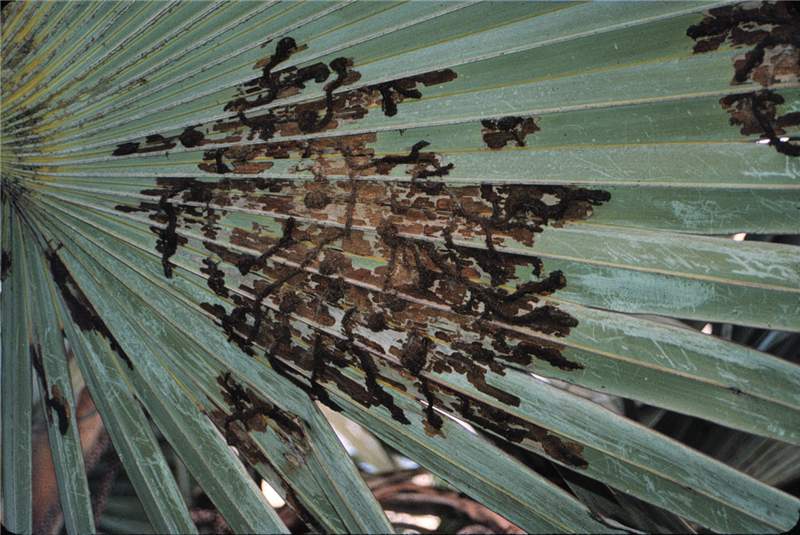Palm Leaf Skeletonizer Damage
|
Figure 1. Damage caused by leaf skeletonizer (Homaledra sabalella) larvae on Latania lontaroides. Photo by T.K. Broschat
|
|
Figure 2. Frass tubes of palm leaf skeletonizer (Homaledra sabalella) on Latania lontaroides. Photo by T.K. Broschat
|
Symptoms
Symptoms appear on mid-canopy to older leaves as necroticnecrotic:
see necrosis
translucent blotches on the leaflets. Often only the epidermal layers of the leaves remain, hence the name "leaf skeletonizer" (Fig. 1). Typically, dark brown frass tubes will cover some or all of the damaged areas and conceal the insect larvae (Fig. 2).
May be confused with
Nothing can be confused with leaf skeletonizer damage.
Cause
Leaf skeletonizer damage is caused by the feeding of Homoledra sabalella larvae.
Occurrence
Fan palms such as Latania sp., Sabal sp., Washingtonia sp., and others are the preferred hosts. Coconut palms (Cocos nucifera) are also commonly attacked and it is reported on Phoenix canariensis, but it has not reported from any other feather-leaved palm species. This insect is a serious pest in Florida, Puerto Rico, Mexico, and the Virgin Islands.




